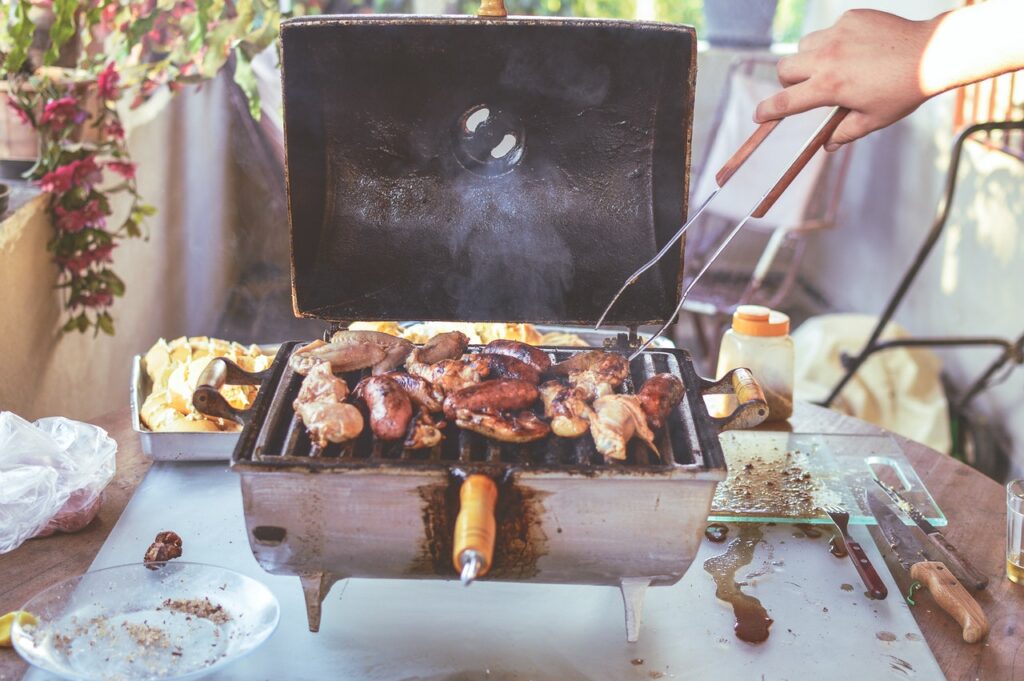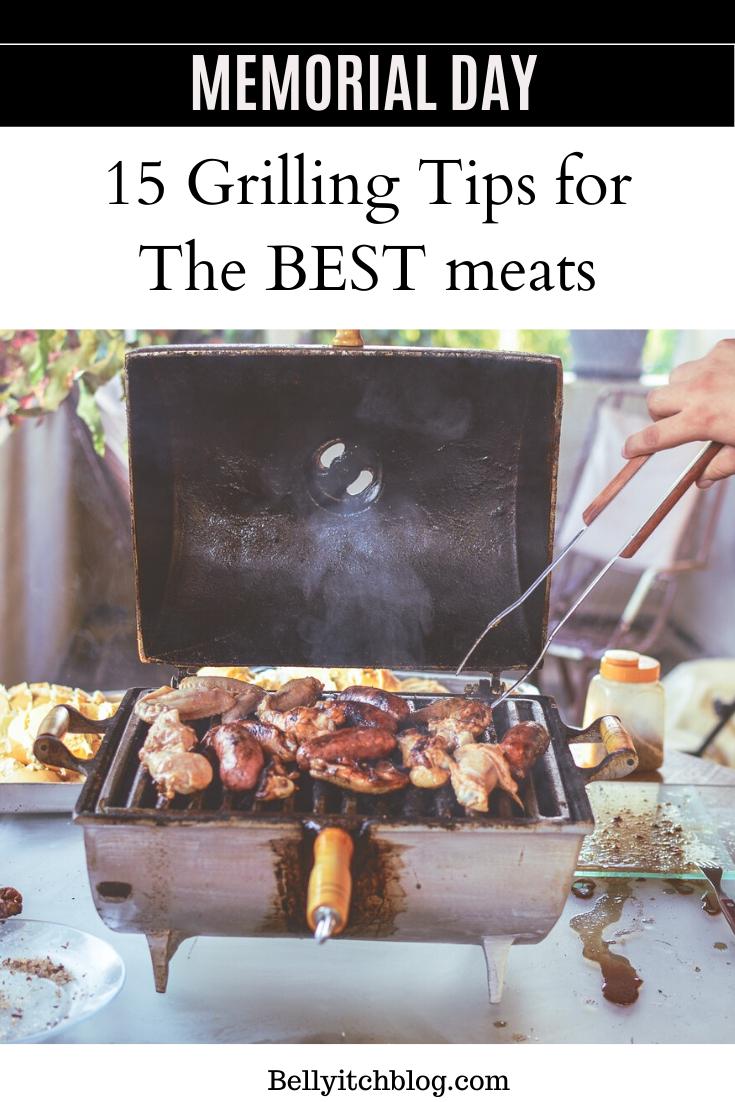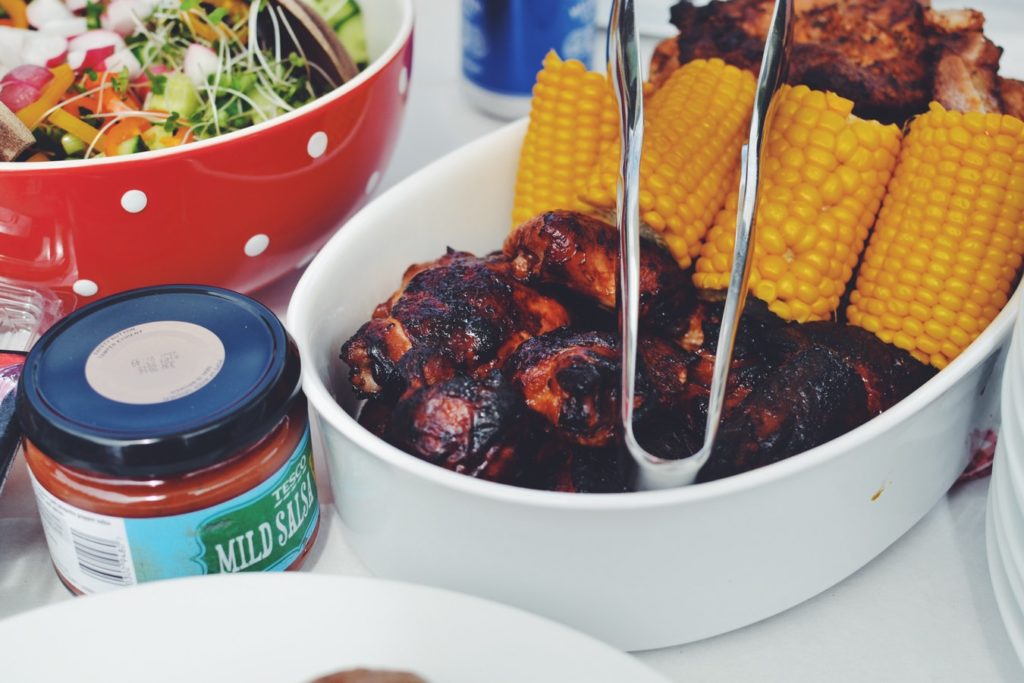
If you are grilling for Memorial Day this weekend and need some grilling tips, you’ve come to the right place. Here are 15 of our fave tips we spotted from various sources and around the web and assembled into top 15 tips
1. Gas vs. Charcoal? – The age-old debate over which grilling method is “better” involves multiple variables, from flavor to cost to convenience. While no studies prove that either is healthier, gas does burn cleaner. Charcoal grills emit more carbon monoxide, particulate matter and soot into the atmosphere, contributing to increased pollution and higher concentrations of ground-level ozone. From a taste perspective, on the other hand, many people prefer the smokier, richer taste of food cooked on a charcoal grill.
2. Get It Hot!– Preheat your grill 15 to 25 minutes before you start cooking to make sure it reaches the right temperature (and to kill any bacteria). Your grill should be 400-450°F for high, 350-400°F for medium-high, 300-350°F for medium and 250-300°F for low heat. A properly heated grill sears foods on contact, keeps the insides moist and helps prevent sticking. While searing doesn’t “seal in” the juices (contrary to popular belief ), it does create improved flavors through caramelization.
3. Brush It Off – It’s easier to remove debris when the grill is hot, so after preheating, use a long-handled wire grill brush on your grill rack to clean off charred debris from prior meals. Scrape again immediately after use.
4. Oil It Up– Even on a clean grill, lean foods may stick when placed directly on the rack. Reduce sticking by oiling your hot grill rack with a vegetable oil-soaked paper towel: hold it with tongs and rub it over the rack. (Do not use cooking spray on a hot grill.)
5. Marinate Your Meat -Marinating does more than infuse food with flavor; it also inhibits the formation of potentially carcinogenic HCAs (heterocyclic amines), which form when grilling “muscle meats” like poultry, red meat and fish. According to the American Institute for Cancer Research (AICR), marinating can reduce HCA formation by as much as 92 to 99 percent.
6. Is It Done?– The best way to know if protein is fully cooked is to check its internal temperature with an instant-read thermometer.
7. The Hand Test– To gauge the temperature of a grill without a thermometer, place your open palm about 5 inches above the grill rack; the fire is high if you have to move your hand in 2 seconds, medium if you have to move your hand in 5 seconds and low if you have to move your hand in 10 seconds.
8. Tame The Flames- Flare-ups happen when fat drips onto the heat source and catches fire. This causes carcinogenic PAHs (polycyclic aromatic hydrocarbons) to form and accumulate on your food. Meat licked by flames also tastes “off” and flames may char the outside of food before the inside has thoroughly cooked. To reduce flare-ups, select lean cuts of meat, trim excess fat and remove poultry skin. And, keep a squirt bottle of water near the grill to quickly douse any unexpected flare-ups.
9. Give It A Rest – Let finished meats rest on a clean platter, tented with foil, for about 10 minutes before carving so juices can redistribute evenly.
10. Veggies Lift – Keep the lid up for Veggies so they don’t become too limp and are crisp not soggy
11. Fishy Fish – For fish, slice lemon and make a bed of them and lay the fish on top to grill.
12. Ribs Boil – Boil ribs for 10 to 15 minutes before grilling to make sure you kill all bacteria from them.
13. Get Saucy – Add the sauce during the last 15 minutes of grilling.
14. Keep it Juicy – Don’t flatten your burgers and cause all the succulent juice to run out. Instead poke them with a fork.
15. Portion control – To avoid overcooking or undercooking, grill smaller pieces of meat at a time.
YUM!!!!








